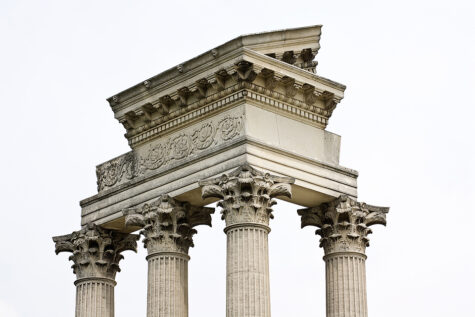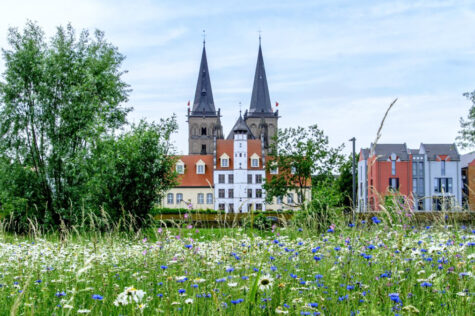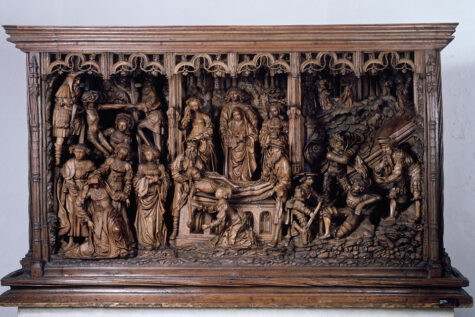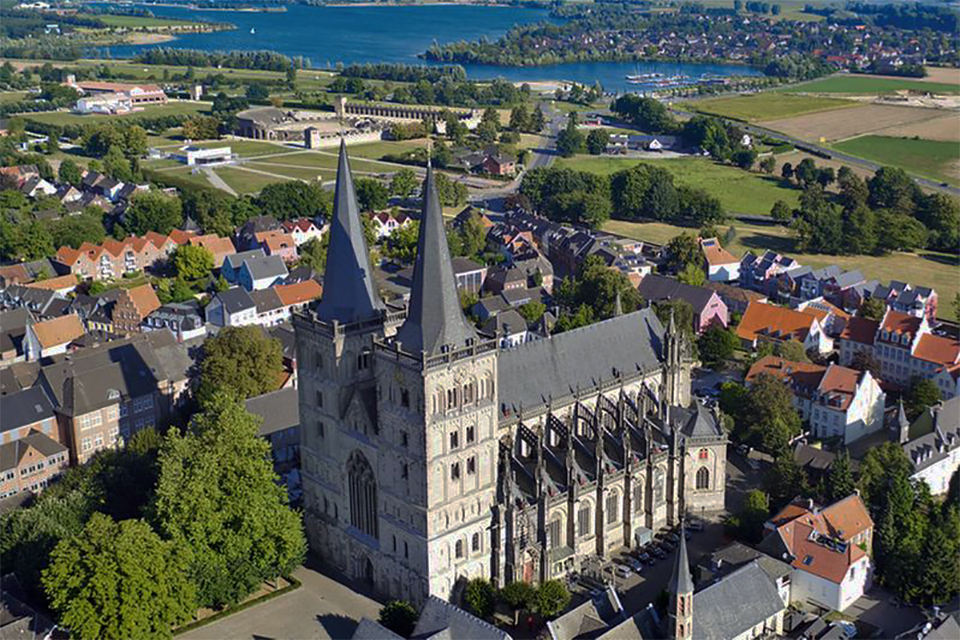Xanten, a small town bordering the River Rhine, is primarily visited for the remains of its excavated Roman garrison. However, the area was a significant nexus in the early medieval Frankish world and deserves a visit.

After the Gallic wars and the defeat of Varus in year nine, the Rhine was established as the more or less permanent border between the Latin and Germanic people. As part of this, a former Frankish settlement at Xanten was destroyed in AD 69-70, leading to the establishment of a small Roman camp, which in AD 98 was granted status as a Colonia and named Ulpia Traiana. This Roman town flourished for over a hundred years until Frankish rebels, the Batavians, destroyed it.
As the colony was gradually abandoned and probably left unoccupied after c. AD 400, the town was never rebuilt. Hence, a full-scale excavation has been possible, and today, the museum houses more than 2500 exhibits while the surroundings offer multiple structures such as the remains of a temple, an amphitheatre, baths and a harbour with a shipyard.
Instead of building on top of the Roman city – as was usual – a medieval new town grew up to the south, around a very early church from c. 500. This early medieval town was built with spoliae from the Roman city and called Xanten, ad sanctos. The legend tells us that the name reflects the pilgrims seeking the graves of St. Victor and his followers, who were said to have been martyred in the nearby arena in the 4th century.

In 1933, archaeological excavations in the Cathedral uncovered a double grave with two heavily molested men who had died from their wounds. The grave was dated based on coins to the period 346–399 and was identified as the grave of these martyrs. Also, the remains of feasts and memorial meals on top of the burial were found. However, later archaeologists have been less confident in identifying the two men as martyrs. Nevertheless, Gregory of Tours wrote in his “liber in gloria Martyriam” at the end of the 6th century how the Bishop of Cologne, Eberigisil († 595), went to Birten just south of the former Roman town and discovered the grave of the saints and built a chapel – Cellae Memorial – to mark out their remains. This edifice has not been identified archaeologically. What status the two men had in the mythical construction of Xanten as a favourable pilgrimage site remains an open question.
Also, what the relationship was between, on the one hand, the Christians buried at Xanten, which were laid to rest without grave goods and which were centred around a mythical martyrial burial, and the simultaneous and spectacular gifted burials from the same period and located less than three km across the river at Bislich, is complicated to imagine. This question deserves a close reading and comparison of the remains in the two burial grounds.
The crypt with the burials of the presumed martyrs, St. Victor and his follower, are today consecrated to the martyred resistance fighters from WW2.
Medieval Backwater

Located on the road from Ingelheim via Cologne to Aachen, the town of Xanten appears to have played a role together with present-day Bislich, as a critical crossroad. Here, Charlemagne repeatedly gathered his army before warring in Saxony. Later, in AD 863, the small towns and villages were destroyed by Vikings venturing down the Rhine. Around the same time, the Abbey of St.Victor is mentioned for the first time, perhaps now moving the centre of gravity from Bislich to Xanten, where – soon after –a three-aisled basilica was built. Unlike this magnificent building in Xanten, Bislich was placed in the background and fitted with a small village church. However, it is not until 1228 that Cologne grants Xanten town rights, and the town still feels like a charmed backwater.
Today, the city of Xanten presents itself as a lovely medieval city which we enter through the double Klever Tor from 1393. The main point of visit is the five-aisled Gothic Cathedral. With a Romanesque-Gothic, west facade, it opens up to a rich interior. The choirstalls from c. 1250 are the oldest in the region, while 14th-century glass paintings are worth noting. The altar, which holds the martyrs’ shrine from 1150, has an altarpiece from 1530 created by Barthel Bruyn the Elder. The Lady Altar from 1535 is by Heinrich Douvermann (1480-1543). The Cathedral retains its chapter house and Gothic cloister. In the Cathedral Museum, the city’s history is made pleasantly accessible.
Xanten lies near to an important Nature Reserve, Bislicher Insel and Bislich, where the Man from Bodi and his 900 fellow Franks were buried.
SPONSORED CONTENT
SOURCE:
READ MORE:
